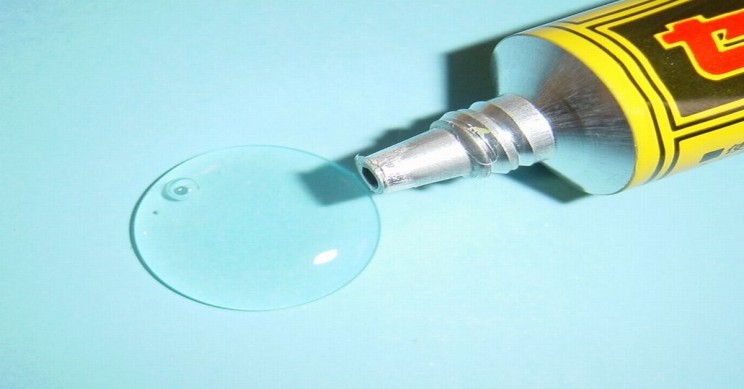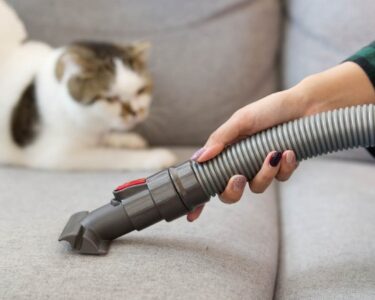Glues are composed of molecules whose electrons form bonds with molecules on other surfaces. There can be many variations in the type of bond. Many adhesives take advantage of covalent bonds, in which electrons are shared between the glue and the surface, forming a very strong bond.
It is worth remembering the story of the inventor of super glue. It was during World War II in 1942 that American scientist Harry Coover along with Fred Joyner worked in Kodak laboratories was looking for a transparent material for the rifle plastic sights. Coover created the methyl cyanoacrylate, but it was almost impossible to use for the reason that it was too sticky and clinging to everything.
It was in other investigations years later that Coover, at the Kodak chemical plant in Tennessee, noticed the usefulness of his invention. The super glue was launched in 1958 and quickly gained popularity. During the Vietnam War, cyanoacrylate was used for the treatment of wounds. Surgeons on the ground sprayed the substance on open wounds to stop bleeding and allow patients to be moved. The super glue is still used for medical uses like sutures, but it is not the same cyanoacrylate that is bought in stores. Methyl cyanoacrylate has the ability to transform into a chain of bonds extremely difficult to break. Coover was awarded the 2010 National Medal of Technology and Innovation by President Barack Obama, shortly before he died on March 26, 2011.
In making models, the super glue is mixed with bicarbonate to be able to mechanize and to polish the joints, the mixture creates a hard paste like a stone. To break a bond of super glue, you can try to freeze the object, the cold weakens the cyanoacrylate and breaks. The reverse temperature, the heat, can soften the bond, in a similar way to the behavior of plastics.
When you are applying this adhesive, do not try to inhale since the vapors are toxic.
It is not advisable that joints of this type are exposed to sunlight for the reason that they are sensitive to ultraviolet rays. Water, on the other hand, is also detrimental.
This product over time crystallizes and becomes brittle against certain mechanical stresses, so super glue may not be the ideal glue for everything. A few more considerable options for glue are as follows;
- Contact Ceys
- Fix it
- Henkel Tangit
- Krafft PVC
- Pattex 1541276
- Wolfpack
- Ceys PVC 101 Pressure 500ml
- Loctite Ultra Gel Super Glue
- Gorilla Super Glue
- Scotch Super Glue Liquid
Anyone who has used the super glue or any of its competitors knows how easy it is to keep your fingers stuck. Harry Coover, the inventor of super glue, thought the same thing that annoyed industrial customers of cyanoacrylate could revolutionize wound treatment. It allowed the medical dream of having a surgical procedure without sutures. No more dots and staples, just use super glue.
In 1960, Tennessee Eastman partnered with Ethicon, a subsidiary of Johnson & Johnson. For more than ten years both companies conducted studies on animals and people on how this chemical could be used on the battlefield.
With super glue, surgeons could join veins, arteries and intestines or close a cut in the skin. Ophthalmologists could use this adhesive to close a cut in the eyeball, which was a considerable improvement over complicated conventional methods. As the research progressed, the medical benefits of super glue appeared to seem unlimited.
The super glue used in these tests was not the same as used to mount the United States nuclear weapons. Eastman and Ethicon’s research had already determined that super glue used in industrial adhesives was toxic to animal tissues and caused inflammation, irritation, and increased levels of formaldehyde in the body.
For medical applications the researchers used longer chain cyanoacrylates, which showed little or no toxicity in the clinical trials. The longer polymer chains solidified faster than the industrial adhesive, which unexpectedly allowed the medical application of super glue as a hemostatic agent.
A hemostatic agent stops uncontrolled bleeding of a wound. Almost any surgery can cause uncontrolled bleeding. In extreme cases, the patient may bleed. Nowhere is this truer than in the treatment of combat wounds.
The US Army Medical Biomechanical Research Laboratory showed great interest in Eastman’s research on tissue adhesives. During 1960s, the number of American soldiers fighting in the jungles and streets of Vietnam increased considerably. The war wounded or killed eight percent of deployed soldiers, and many of them from very traumatic injuries from bullet wounds or shrapnel.
The helicopter evacuation allowed many of these soldiers to receive medical attention within minutes of being injured. But many succumbed to uncontrolled hemorrhages in the chest or abdomen before they could receive proper care. The Medical Biomechanical Research Laboratory funded research into the application of super glue as a hemostatic agent and developed its own version of the product in sterile, disposable spray format. Other competing products had to be connected to a nitrogen bottle in order to use them and required thorough cleaning after each use, which did not make them suitable for the battlefield.






